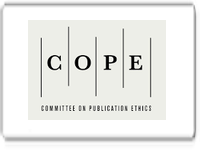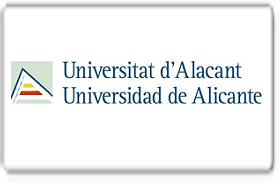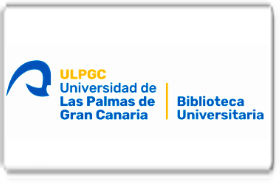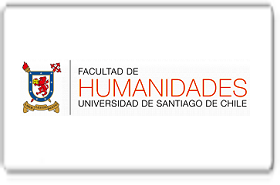Estudio de las causas del colapso de puentes en Ecuador (2000-2022).
DOI:
https://doi.org/10.56048/MQR20225.6.4.2022.368-395Palabras clave:
Puente, Colapso, Socavación, Sobrecargas, Diseño, Impacto.Resumen
En este artículo se estudiaron 72 casos de fallas de puentes en Ecuador reportadas desde el año 2000 hasta 2022. Para identificar las principales causas del colapso parcial o total de los puentes en estudio, se realizó un análisis y evaluación del daño de la estructura, mediante información divulgada públicamente. El 47% de los casos estudiados corresponde a puentes de hormigón, el 40% corresponde a estructuras de acero y el 13% restante comprenden puentes de madera. Las causas más frecuentes de fallas de puentes se atribuyeron a crecientes de ríos, sobrecargas e impactos. Las inundaciones y la socavación, contribuyeron al pico de frecuencia de fallas con un 46% de todas las fallas. La sobrecarga del puente y las fuerzas de impacto lateral de camiones y barcos constituyen el 25% de las fallas totales. Otras causas principales frecuentes son el diseño, los detalles, la construcción, el mantenimiento y eventos sísmicos. Basados en los resultados obtenidos, se evidencia la necesidad que tiene el país y la región en el área de conservación de las obras de Infraestructura vial. Por lo tanto, se recomienda crear un programa riguroso de administración, control y mantenimiento de los puentes en el país para evitar que se sigan presentando este tipo de desastres en el futuro.
Descargas
Métricas
Cited
DOI: 10.56048![]()
Citas
Abdelhamid, T. S., & Everett, J. G. (2000). Identifying Root Causes of Construction Accidents. Journal of Construction Engineering and Management, 126(1), 52–60. https://doi.org/10.1061/(ASCE)0733-9364(2000)126:1(52)
American Association of State Highway and Transportation Officials (AASTHO). (1999). Federal codes of regulations: revised as of April 1, 1999, Washington, DC.
Appalto, D., & Demolizione, D. I. (2019). RELAZIONE UNICA SULLA PROCEDURA DI AGGIUDICAZIONE. 10.
Barros, J. G., Troncoso, A. Y. (2010). Atlas climatológico del Ecuador. Escuela Politécnica Nacional. Quito; Ecuador.
Bergström, M., Täljsten, B., & Carolin, A. (2009). Failure Load Test of a CFRP Strengthened Railway Bridge in Örnsköldsvik, Sweden. Journal of Bridge Engineering, 14(5), 300–308. https://doi.org/10.1061/(ASCE)BE.1943-5592.0000005
Corporación Andina de Fomento. (2000). El fenómeno El Niño 1997-1998. Memoria, retos y soluciones. Ecuador. Prevención y Mitigación de Desastres Naturales, 305 pp. http://dipecholac.net/docs/files/995-publicacion-caf-ecuador-nino-97-98.pdf
Deng, L., Wang, W., & Yu, Y. (2016). State-of-the-Art Review on the Causes and Mechanisms of Bridge Collapse. Journal of Performance of Constructed Facilities, 30(2). https://doi.org/10.1061/(asce)cf.1943-5509.0000731
Durán Yazuna, S. V., & Quisphe Coro, C. (2009). Reparación de puentes de hormigón colapsados, mediante la instalación de sistemas estructurales de acero. 318. http://bibdigital.epn.edu.ec/handle/15000/1462
El Comercio. (2010, July 24). Un puente de metal se cayó en Zamora. El Comercio. https://www.elcomercio.com/actualidad/ecuador/puente-metal-cayo-zamora.html
El Comercio. (2011, June 11). Un puente cayó y mató a dos personas. El Comercio. https://www.elcomercio.com/actualidad/quito/puente-cayo-y-mato-a.html
Estes, A. C., & Frangopol, D. M. (2001). Bridge Lifetime System Reliability under Multiple Limit States. Journal of Bridge Engineering, 6(6), 523–528. https://doi.org/10.1061/(asce)1084-0702(2001)6:6(523)
Helsin, W., Shih-Chun, H., Cheng, L., & Chung-Yue, W. (2014). Forensic Diagnosis on Flood-Induced Bridge Failure. I: Determination of the Possible Causes of Failure. Journal of Performance of Constructed Facilities, 28(1), 76–84. https://doi.org/10.1061/(ASCE)CF.1943-5509.0000419
Jian-Hao, H., Yee-Meng, C., Jau-Yau, L., Jihn-Sung, L., & Yung-Bin, L. (2012). Houfeng Bridge Failure in Taiwan. Journal of Hydraulic Engineering, 138(2), 186–198. https://doi.org/10.1061/(ASCE)HY.1943-7900.0000430
Kim, S., Frangopol, D. M., & Soliman, M. (2013). Generalized Probabilistic Framework for Optimum Inspection and Maintenance Planning. Journal of Structural Engineering, 139(3), 435–447. https://doi.org/10.1061/(ASCE)ST.1943-541X.0000676
Lin, C., Han, J., Bennett, C., & Parsons, R. L. (2014). Case history analysis of bridge failures due to scour. Climatic Effects on Pavement and Geotechnical Infrastructure - Proceedings of the International Symposium of Climatic Effects on Pavement and Geotechnical Infrastructure 2013, 204–216. https://doi.org/10.1061/9780784413326.021
Lu, J.-Y., Hong, J.-H., Su, C.-C., Wang, C.-Y., & Lai, J.-S. (2008). Field Measurements and Simulation of Bridge Scour Depth Variations during Floods. Journal of Hydraulic Engineering, 134(6), 810–821. https://doi.org/10.1061/(asce)0733-9429(2008)134:6(810)
Lu, Y. E., & Zhang, L. M. (2013). Progressive collapse of a drilled-shaft bridge foundation under vessel impact. Ocean Engineering, 66, 101–112. https://doi.org/https://doi.org/10.1016/j.oceaneng.2013.04.007
Mitropoulos, P., Abdelhamid, T. S., & Howell, G. A. (2005). Systems Model of Construction Accident Causation. Journal of Construction Engineering and Management, 131(7), 816–825. https://doi.org/10.1061/(ASCE)0733-9364(2005)131:7(816)
MTOP, (Ministerio de Transporte y Obras Publicas). (2018). PROYECTO DE RECONSTRUCCIÓN DE OBRAS POR EL TERREMOTO 2016. CUP 175200000.0000.381287.
Muñoz, E., Núñez, F., & Mohammadi, J. (2009). Investigation of Common Causes of Bridge Collapse in Colombia. Practice Periodical on Structural Design and Construction, 14(4), 194–200. https://doi.org/10.1061/(asce)sc.1943-5576.0000006
Pan, Y., Agrawal, A. K., Ghosn, M., & Alampalli, S. (2010). Seismic Fragility of Multispan Simply Supported Steel Highway Bridges in New York State. II: Fragility Analysis, Fragility Curves, and Fragility Surfaces. Journal of Bridge Engineering, 15(5), 462–472. https://doi.org/10.1061/(ASCE)BE.1943-5592.0000055
Rymsza, J. (2020). Causes of the morandi viaduct disaster in genoa as a contribution to the design of pre-stressed structures. Roads and Bridges - Drogi i Mosty, 19(1), 5–25. https://doi.org/10.7409//rabdim.020.001
Saadeghvaziri, M. A., & Yazdani-Motlagh, A. R. (2008). Seismic behavior and capacity/demand analyses of three multi-span simply supported bridges. Engineering Structures, 30(1), 54–66. https://doi.org/https://doi.org/10.1016/j.engstruct.2007.02.017
Sharma, S., & Mohan, S. B. (2011). Status of Bridge Failures in the United States (1800-2009). Trb 2011, 1–15.
Wang, F. M., Kang, S. Z., Cai, Y. C., & Li, X. L. (2011). Destructive Test Study of a Prestressed Concrete Hollow Slab Beam Bridge. 57–64. https://doi.org/10.1061/47625(404)8
Wardhana, K., Hadipriono, F. C., & Asce, F. (2003). Analysis of Recent Bridge Failures in the United States. August, 144–150.
Witzany, J., Cejka, T., & Zigler, R. (2008). Failure Resistance of Historic Stone Bridge Structure of Charles Bridge. II: Susceptibility to Floods. Journal of Performance of Constructed Facilities, 22(2), 83–91. https://doi.org/10.1061/(ASCE)0887-3828(2008)22:2(83)
Zhang, J., Peng, H., & Cai, C. S. (2013). Destructive Testing of a Decommissioned Reinforced Concrete Bridge. Journal of Bridge Engineering, 18(6), 564–569. https://doi.org/10.1061/(ASCE)BE.1943-5592.0000408
Publicado
Cómo citar
Número
Sección
Licencia
Derechos de autor 2022 MQRInvestigar

Esta obra está bajo una licencia internacional Creative Commons Atribución 4.0.
Los autores se comprometen a respetar la información académica de otros autores, y a ceder los derechos de autor a la Revista MQRInvestigar, para que el artículo pueda ser editado, publicado y distribuido. El contenido de los artículos científicos y de las publicaciones que aparecen en la revista es responsabilidad exclusiva de sus autores. La distribución de los artículos publicados se realiza bajo una licencia 
































































































